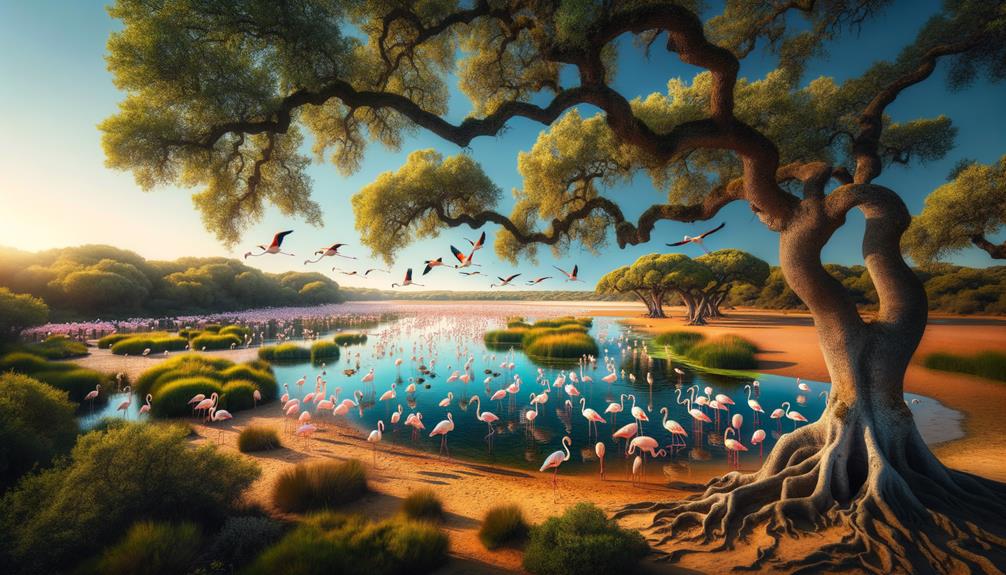As I wandered through Huelva Doñana National Park, I was struck by the incredible diversity of life that unfolded before me. The marshlands, home to over 1,400 species of plants, felt like a living, breathing botanical garden. I spotted the elegant Marbled Teal gliding across the water's surface, a testament to the park's vital role in conservation. But beneath the beauty, I sensed a deeper story – one of survival and resilience. How did this sanctuary come to be, and what secrets do these ancient landscapes hold? Let's uncover the park's significance together.
Overview of Doñana National Park
Doñana National Park in Andalusia, Spain, is a breathtaking destination that spans 54,252 hectares of diverse landscapes. The park's unique blend of marshlands, mobile dunes, and thriving bird colonies creates a rich tapestry of ecosystems.
As I explored this stunning park, I was struck by the sheer variety of habitats that support over 230 bird species. The park provides a safe haven for endangered species like the Spanish imperial eagle and the elusive Iberian lynx. These creatures thrive in the park's varied environments, from serene marshlands to dynamic dunes.
Visitors can enhance their experience at Doñana's visitor centers, such as El Acebuche and La Rocina, which offer guided tours, photography courses, and birdwatching opportunities. These centers provide a deeper understanding of the park's intricate ecosystems and the delicate balance that sustains them.
Doñana National Park is a nature lover's paradise, where the beauty and diversity of Andalusia's wild landscape are preserved and celebrated. It's a must-visit destination for anyone seeking an immersive experience in unspoiled nature.
Flora and Fauna
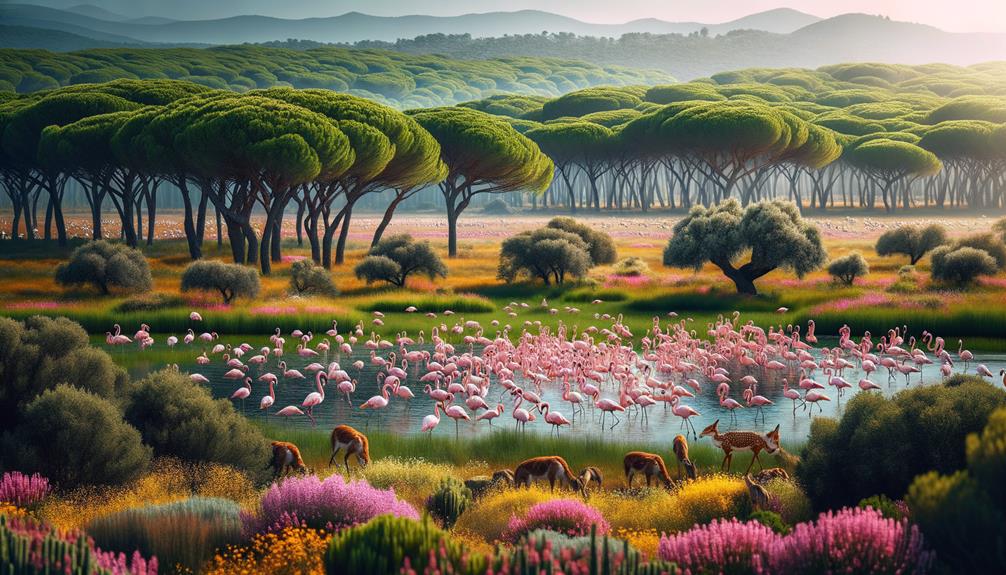
Doñana National Park is a living mosaic of biodiversity, boasting an enchanting variety of flora and fauna that's crucial for conservation. As I wander through the park, I'm struck by the 1,400-plus plant species, including Chicoria hueca, Onopordun hinojense, and Adenocarpus gibssianus. Each plant adds depth to the park's vibrant landscape, thriving in diverse habitats that range from saline wetlands to lush, sweet landscapes.
The park's faunal species are equally captivating. I often spot the threatened Marbled Teal and White-headed Duck gliding effortlessly across the water. The majestic Iberian Imperial Eagle soaring overhead and the elusive Iberian Lynx prowling through the underbrush leave me in awe. These endangered species find a safe haven in Doñana's varied habitats, a testament to the park's vital role in preserving biodiversity.
Every winter, Doñana's wetlands attract a staggering 500,000 waterfowl, transforming the park into a bustling hub of avian activity. The coexistence of xerophilic and hydrophilic terrestrial ecosystems creates unique habitats that support an astonishing range of life. This diverse habitat not only nurtures wildlife but also underscores the park's irreplaceable ecological significance.
Conservation Efforts
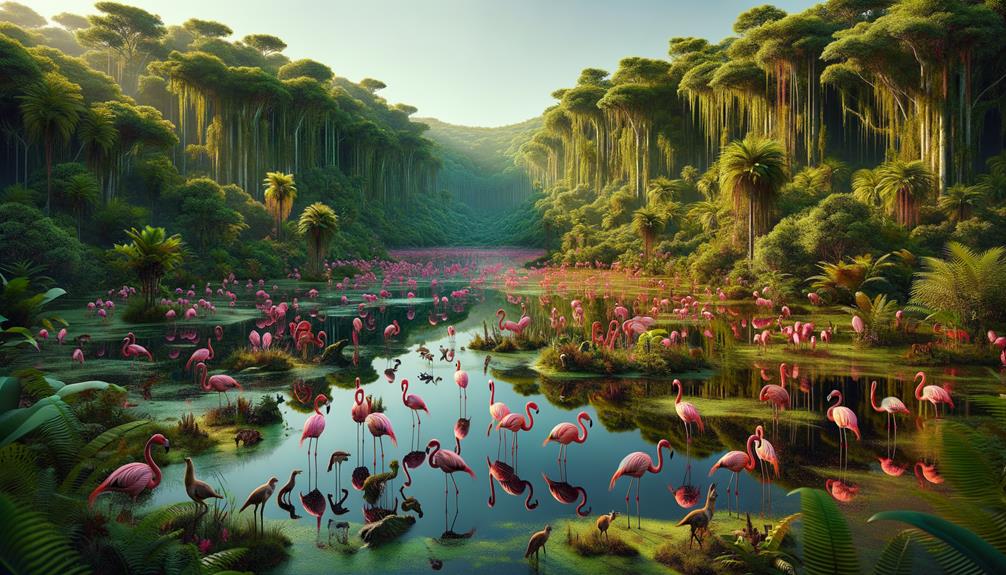
During my frequent visits to Doñana National Park, I'm constantly impressed by the conservation efforts in place to protect its rich biodiversity. As a Biosphere Reserve, Ramsar Site, and Special Protection Area for birds, the park's global significance is undeniable.
Efforts focus on iconic species like the Iberian lynx and the Spanish imperial eagle. To preserve their habitats, naturalization initiatives are underway to remove exotic plants and restore critical areas. This enhances the park's resilience and fosters a thriving ecosystem.
Sustainable development plans and land use strategies are vital in ensuring the park's treasures can be enjoyed by future generations. However, the park faces challenges like groundwater competition, which threatens its ecological integrity. Ongoing monitoring and research are necessary to address these issues effectively.
As I walk through the park, I often reflect on the delicate balance between human activity and nature. The commitment to conservation is palpable, and it's heartening to see such dedication to maintaining biodiversity. Each visit reminds me of the importance of preserving these natural wonders, not just for their beauty but for the ecological importance they represent.
Historical Significance
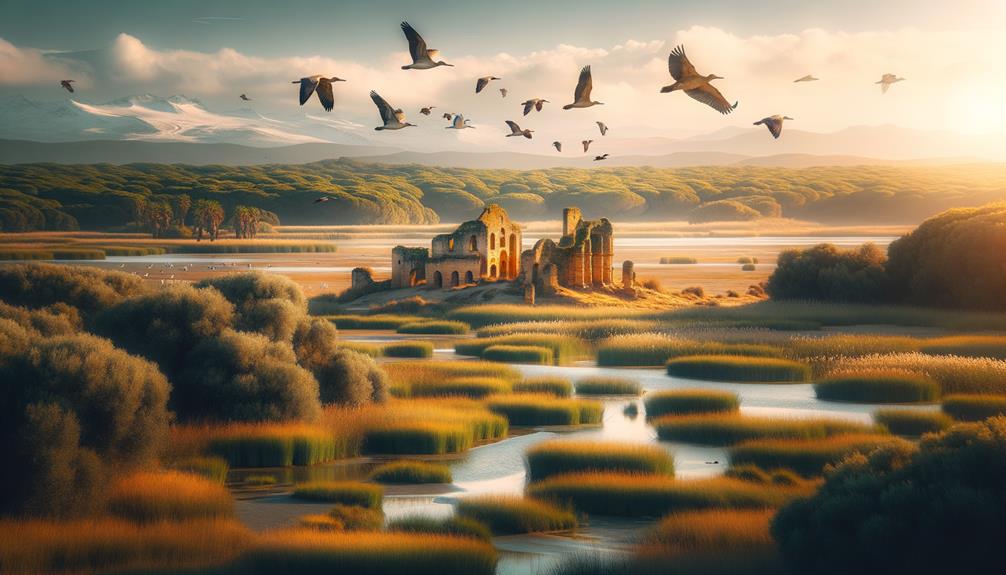
As I explore Doñana National Park's conservation efforts, I'm constantly reminded of the rich history that permeates this land. With over 700 years of human presence, the park's tapestry is woven from Roman settlements, royal hunting grounds, and ancient pilgrimage routes. The echoes of pilgrims and the cries of the Spanish imperial eagle still resonate through the air.
In the Guadalquivir marshes, ancient artifacts like Neolithic tools whisper stories of early human habitation. The park's designation as a UNESCO World Heritage Site and Biosphere Reserve underscores its unique blend of historical and ecological significance. The biodiversity in Europe is exemplified here, with the Iberian Lynx roaming its forests and a myriad of flora and fauna thriving in its ecosystems.
Here's a brief look at Doñana's historical timeline:
| Period | Event | Significance |
|---|---|---|
| Roman Era | Settlements | Early human activity |
| Medieval | Royal Hunting Grounds | Noble and royal usage |
| 1969 | Nature Reserve Establishment | Conservation efforts begin |
| 1980 | UNESCO World Heritage Site | International recognition |
| Present | Biosphere Reserve | Ongoing protection and study |
This intricate history adds layers of depth to our understanding of Doñana, making it not just a haven for species, but also a living testament to human heritage.
Visitor Information
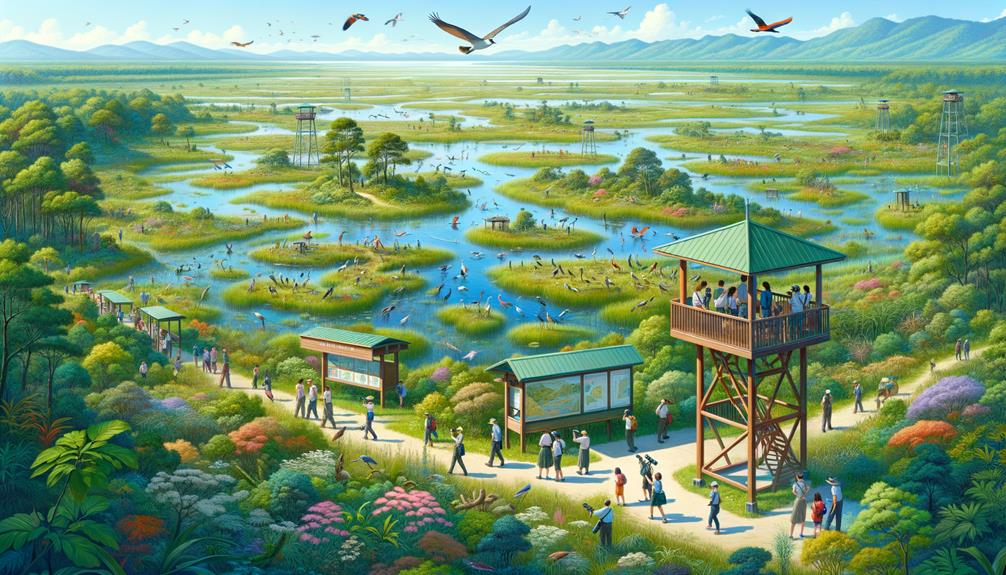
Exploring Doñana National Park is a rich experience that connects you with nature and history. With over 230 bird species, the park's visitor centres are a great place to start your journey, providing insight into this diverse ecosystem. Bird enthusiasts will love the numerous paths and observatories, perfect for spotting their favorite species.
As I walked along these paths, I felt the timeless beauty of the park, each step revealing another layer of its ecological and cultural richness. Guided tours, whether on foot or by off-road vehicle, offer a deeper look into the park's hidden treasures. Horse riding is another way to experience the park's landscapes from a unique perspective.
The quaint white village of El Rocío, near the park, is worth a visit, especially during the Procession of El Rocío in May-June or the Saca de Yeguas on June 26. These events bring vibrant cultural traditions to life, adding to the park's allure. Whether you're there for the wildlife, scenery, or cultural festivities, Doñana National Park promises a journey of discovery.

